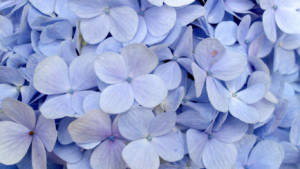Introduction: The Plight of Endangered Birds
Birds are nature’s masterpieces, painting the skies with vibrant colors and filling the air with enchanting melodies. From the majestic California condor soaring over rugged cliffs to the quirky kakapo waddling through New Zealand’s forests, these creatures are vital to our ecosystems. They pollinate plants, disperse seeds, and maintain the delicate balance of nature. Yet, many are teetering on the edge of extinction, their songs at risk of fading forever. According to the International Union for Conservation of Nature (IUCN), over 1,400 bird species—roughly one in eight—are threatened with extinction. This alarming statistic underscores the urgency of raising awareness about the world’s most endangered birds.
In this comprehensive guide, we dive into the top 10 endangered birds, exploring their unique traits, the threats they face, and the conservation efforts racing against time to save them. Whether you’re a bird enthusiast, a conservation advocate, or simply curious about the natural world, this article will captivate and educate you. Let’s embark on a journey to discover these remarkable species and learn how we can help ensure their survival.
Why Are Birds Endangered?
Before we meet these extraordinary birds, it’s crucial to understand the forces pushing them toward extinction. Human activities are the primary culprits, reshaping the planet in ways that threaten avian survival. Deforestation, driven by agriculture and urbanization, destroys critical habitats. Climate change disrupts migration patterns and breeding seasons. Illegal hunting and the exotic pet trade decimate populations, while invasive species, like rats and cats, prey on vulnerable birds. Pollution, including pesticides and lead poisoning, further compounds the crisis. For instance, agricultural expansion threatens 74% of the world’s most endangered bird species, particularly in biodiverse tropical regions. These challenges are daunting, but conservation efforts offer hope, and awareness is the first step toward change.
The Top 10 Endangered Birds
1. California Condor: North America’s Sky Giant
The California condor, with its awe-inspiring 9-foot wingspan, is the largest wild bird in North America. Once soaring from Vancouver to Mexico, this critically endangered species now clings to survival in two small populations in California and northern Arizona. As of 2020, only 93 individuals remained in the wild, a stark reminder of their precarious existence. Lead poisoning, primarily from ingesting bullet fragments in carrion, is their greatest threat. One study revealed that a third of condors had toxic lead levels in their blood. Other dangers include pesticide exposure, trash ingestion, and West Nile virus.
Conservation efforts have been a lifeline for the condor. In the 1980s, with only six individuals left, the U.S. Fish and Wildlife Service launched a captive breeding program. Today, over 500 condors exist, thanks to intensive monitoring and reintroduction programs. Organizations like the Ventana Wildlife Society work tirelessly to replace lead ammunition with non-toxic alternatives, giving these majestic birds a fighting chance.
2. Kakapo: The Night Parrot of New Zealand
The kakapo, often called the owl parrot, is a nocturnal, flightless marvel native to New Zealand. This quirky, moss-green parrot, weighing up to 4 kilograms, once roamed Polynesia but is now confined to two small islands off southern New Zealand. With only about 200 individuals left, the kakapo is critically endangered, largely due to predation by invasive species like rats, stoats, and cats. Habitat loss from deforestation has also taken a toll.
The Kakapo Recovery Programme, launched in 1990 by New Zealand’s Department of Conservation, is a beacon of hope. Conservationists use radio transmitters to monitor each bird, control predators, and raise chicks in predator-free environments. These efforts have slowly boosted numbers, but the kakapo remains vulnerable to disease and natural disasters. Its charming, bumbling behavior has made it a global symbol of conservation, famously highlighted by Stephen Fry’s encounter with one on BBC’s Last Chance to See.
3. Northern Bald Ibis: The Red-Faced Wanderer
The northern bald ibis, with its striking black feathers, red face, and long, curved bill, is a critically endangered bird facing a complex array of threats. Once widespread across Europe, North Africa, and the Middle East, it now survives in small pockets, primarily in Morocco, where only 200-250 individuals remain. Hunting, pesticides, and habitat disturbance from illegal construction and farming changes have decimated populations. In Syria, the last wild individual was spotted in 2015, and in Turkey, poisoning has reduced breeding success.
Conservation initiatives, such as the Northern Bald Ibis Conservation Project, focus on habitat restoration and captive breeding. In Morocco, efforts to protect breeding sites have shown promise, but the species’ fragmented populations make recovery challenging. The ibis’s bald head, an adaptation for foraging in muddy areas, adds to its unique allure, making it a priority for global conservationists.
4. Yellow-Crested Cockatoo: Indonesia’s White Parrot
The yellow-crested cockatoo, a medium-sized white parrot with a vibrant yellow crest, is native to Indonesia and Timor-Leste. Critically endangered, its population has dwindled to an estimated 1,200-2,000 individuals due to the illegal cage-bird trade. Despite being protected under CITES Appendix I since 1994, poaching continues to threaten this charismatic species. Deforestation for agriculture and logging further erodes its forest habitats.
Conservation groups like BirdLife International are working to curb illegal trapping and restore habitats. Community education programs in Indonesia aim to reduce demand for wild-caught cockatoos, promoting sustainable alternatives. The cockatoo’s playful demeanor and striking appearance make it a beloved species, but urgent action is needed to prevent its extinction.
5. Dwarf Ibis: São Tomé’s Hidden Gem
The dwarf ibis, also known as the São Tomé ibis, is a critically endangered wading bird native to the island of São Tomé off West Africa. Its dark green plumage and long, downcurved bill make it a unique member of the ibis family. With only 130-1,700 individuals left, hunting is the primary threat, compounded by habitat loss from coastal development. The dwarf ibis’s small range makes it particularly vulnerable to extinction.
Efforts to protect this elusive bird include anti-poaching patrols and habitat preservation initiatives led by local conservation groups. Raising awareness about the dwarf ibis’s plight is challenging due to its remote habitat, but international support is growing. Its role in controlling crustacean populations underscores its ecological importance, making its survival a priority.
6. Hyacinth Macaw: The Amazon’s Blue Jewel
The hyacinth macaw, the world’s largest flying parrot, dazzles with its vibrant blue plumage. Found primarily in Brazil’s Pará state, this critically endangered bird has been reduced to 2,000-6,500 individuals. Deforestation in the Amazon, driven by agriculture and logging, is the biggest threat, destroying the Manduvi trees where macaws nest. Poaching for the exotic pet trade, which saw 10,000 birds captured in the 1980s, continues to endanger the species.
Conservation programs, such as those by the Hyacinth Macaw Project, focus on protecting nesting sites and reforesting critical habitats. Anti-poaching laws have reduced illegal trade, but enforcement remains a challenge. The macaw’s role in seed dispersal highlights its importance to the Amazon’s ecosystem, making its preservation vital.
7. Mariana Fruit Dove: Guam’s Endangered Seed Disperser
The Mariana fruit dove, a colorful pigeon native to Guam and the Northern Marianas Islands, is endangered due to habitat loss and predation by invasive brown tree snakes. By the 1980s, the dove was nearly extinct on Guam, with populations dropping to a few thousand across other islands. Its reliance on primary and secondary forests makes it vulnerable to deforestation.
Captive breeding programs, led by zoos like the St. Louis Zoo, have helped stabilize numbers, but the dove remains on the IUCN Red List as endangered. Efforts to control invasive snakes and restore forests are ongoing, but progress is slow. The dove’s role in dispersing fig seeds is crucial for forest regeneration, underscoring the need for continued conservation.
8. Forest Owlet: India’s Tiny Predator
The forest owlet, a small owl with massive talons, is critically endangered, with only 70-400 individuals left in central India. Rediscovered in 1997 after being presumed extinct, this species faces ongoing threats from deciduous forest loss. Its ability to hunt prey twice its size makes it a formidable predator, but habitat destruction limits its survival.
Conservation efforts, including habitat restoration and monitoring by the Wildlife Institute of India, aim to protect the owlet’s fragmented populations. Community-based initiatives educate locals about the owl’s ecological role, reducing human-wildlife conflict. The owlet’s rediscovery is a testament to the resilience of nature, but its future hangs in the balance.
9. Kagu: New Caledonia’s Ghost of the Forest
The kagu, a nearly flightless bird with ash-white plumage, is the sole survivor of the Rhynochetidae clade. Native to New Caledonia, it’s critically endangered due to predation by introduced dogs, cats, and pigs, as well as habitat loss. Known as the “ghost of the forest,” the kagu’s population is estimated at a few thousand, with numbers declining rapidly.
Conservation programs, supported by the New Caledonian government, focus on predator control and habitat protection. The kagu’s status as a national emblem has spurred local efforts, but invasive species remain a significant challenge. Its eerie calls and unique appearance make it a cultural and ecological treasure worth saving.
10. Imperial Amazon: Dominica’s Parrot Royalty
The imperial Amazon, one of four critically endangered Amazon parrot species, is native to Dominica. With only a few hundred individuals left, it faces threats from habitat loss due to agriculture and hurricanes, as well as illegal pet trade. Its vibrant green and purple plumage makes it a target for poachers.
The Dominica Parrot Conservation Programme works to protect nesting sites and enforce anti-poaching laws. Reforestation efforts aim to restore the parrot’s montane forest habitat, but climate change poses an ongoing risk. The imperial Amazon’s role in seed dispersal supports Dominica’s forests, making its survival essential for the island’s biodiversity.
Conservation Efforts: A Global Fight for Survival
The stories of these 10 birds highlight the fragility of our planet’s biodiversity, but they also showcase the power of conservation. Organizations like BirdLife International, the IUCN, and local groups are leading the charge. Strategies include captive breeding, habitat restoration, predator control, and anti-poaching enforcement. For example, the Kakapo Recovery Programme’s intensive monitoring has doubled the kakapo population since the 1990s. Similarly, the California condor’s recovery from near-extinction demonstrates the impact of dedicated efforts.
Community involvement is equally critical. In Indonesia, education campaigns reduce demand for yellow-crested cockatoos, while in São Tomé, locals participate in anti-hunting patrols. Technology, such as radio transmitters and 3D-printed eggs for kiwi conservation, is also revolutionizing efforts. However, funding and global cooperation remain essential to scale these initiatives.
How You Can Help Save Endangered Birds
The fight to save endangered birds isn’t just for scientists and conservationists—it’s a call to action for everyone. Here are practical ways you can make a difference:
- Support Conservation Organizations: Donate to groups like the Audubon Society, BirdLife International, or local sanctuaries working on the ground.
- Choose Bird-Friendly Products: Opt for shade-grown coffee and sustainably sourced palm oil to reduce habitat destruction.
- Advocate for Policy Change: Support bans on lead ammunition and stronger wildlife protection laws in your region.
- Create Bird-Friendly Spaces: Plant native trees and set up feeders with clean water to support local bird populations.
- Spread Awareness: Share this article or host a community event to educate others about endangered birds.
Every small action counts. By making conscious choices, you can help ensure these birds continue to grace our skies and forests.
The Ecological Importance of Birds
Birds are more than beautiful creatures—they’re ecological linchpins. The hyacinth macaw and Mariana fruit dove disperse seeds, regenerating forests. The northern bald ibis and dwarf ibis control pest populations, maintaining wetland health. The kakapo’s foraging supports soil aeration, while the California condor’s scavenging cleans ecosystems. Losing these species would ripple through food chains, disrupting plants, herbivores, and predators. Protecting birds means safeguarding the intricate web of life that sustains us all.
SEO Optimization Tips for Bird Conservation Blogs
If you’re inspired to start your own blog about endangered birds, here are SEO tips to maximize reach:
- Target Relevant Keywords: Use tools like Semrush to find low-competition keywords like “endangered bird species” or “how to help endangered birds.”
- Optimize Title Tags: Place primary keywords like “top 10 endangered birds” at the start of your title for better rankings.
- Use Engaging Meta Descriptions: Craft descriptions that entice clicks, such as “Discover the top 10 endangered birds and how to save them!”
- Incorporate Question Keywords: Answer queries like “Why are birds endangered?” to capture search intent.
- Add Schema Markup: Use structured data to help search engines understand your content, boosting visibility.
- Build Quality Backlinks: Partner with conservation blogs or ornithology sites to enhance authority.
By combining compelling content with SEO best practices, you can amplify your message and inspire action.
Conclusion: A Call to Save Our Feathered Friends
The top 10 endangered birds—from the towering California condor to the elusive dwarf ibis—are a testament to nature’s diversity and resilience. Yet, their survival hangs by a thread, threatened by human actions and environmental change. Through conservation, innovation, and collective action, we can rewrite their stories, ensuring their songs echo for generations. Let’s celebrate these remarkable creatures by taking steps today to protect them. Share their plight, support their protectors, and become a voice for the voiceless. Together, we can keep the skies alive with color and song.




